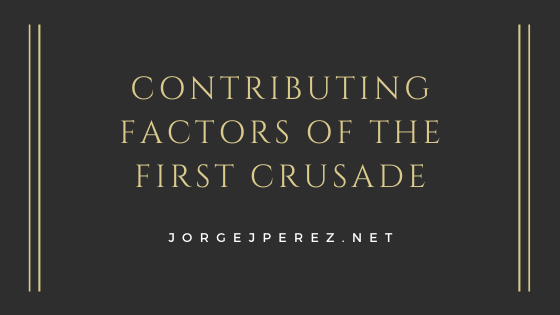By the 12th century, western Europe had established itself as a formidable conglomeration of powerful feudal kingdoms. With religious reform, economic prosperity, military success, and developments in changing government structures, the first few centuries for western Europe provided the right environment for a war based on religious beliefs.
The First Crusade includes events from the 1000s through the early 1200s. When waged in 1066, the war was proposed as a means to further endorse Christianity, especially in the Middle East as European forces moved east, but also to protest Christians living in those regions. With dual intent, religious leaders as well as political figures supported the Crusades a means to uphold and spread their religion while also pleasing God as they fought in His name.
Throughout the Middle Ages, nine crusades have been recorded, but it is largely agreed upon that the first crusade is among the most significant. The factors that contributed to its initiation as well as the events that unfolded during the first crusade impacted the culture at the time as well as attitudes toward religion in general.
Gregorian Reform Movement
Associated with Pope Gregory VII, who was the reform’s most aggressive supporter, the Gregorian Reform was characterized by a focus on independence from the clergy as well as moral integrity. To defend his attitude against lay investiture—that is, the appointment of church officials by lay rulers—Pope Gregory VII cited biblical passages, namely from the gospel of John. This reform movement also sought to abolish simony, which is the act of purchasing things like pardons or other sacred things from the church. A final and crucial element of this movement pertained to celibacy; at this point, lower members of the church still participated in marriage and concubinage, but Pope Gregory VII and his supporters wanted to end these practices entirely.
This reform movement was met with some opposition, and in certain regions, clergymen were permitted to remain married in spite of the changes made by the movement. Even so, this movement paved a path toward the papal monarchy which developed in the 13th century, and these changes also enabled church officials to play a more active role in society and further support larger endeavors, such as a holy war.
Rise of the Seljuks
The Seljuks were a tribe of Muslim individuals from the steppes, and at the beginning of the 11th century, they had begun their rise in power. One of their most notable victories was against the Byzantine army in the Battle of Manzikert which took place in ancient Armenia. Following this victory, the Seljuks seized other cities like Edessa, formed the Sultanate of Rum, and captured Jerusalem.
When the Seljuks took command of Jerusalem, the Byzantine emperor, Alexios I Komenos, sought the aid of kingdoms in western Europe, and Pope Urban II responded favorably along with knights from the region. Previously, Pope Urban II had already supported the Byzantine forces once before. With a new objective of reclaiming the Holy Land, protecting Christians in the east, and promoting a more positive reputation of the papacy, Pope Urban II found the cause worthy enough to call for a crusaded at the Council of Clermont.
Council of Clermont
At this council, held in France, Pope Urban II issued a decree that became known as the Indulgence. He directed this speech at knights with the goal of spurring them to action based on their faith and loyalty. In calling for this first crusade, Pope Urban II insisted that those who fought against the Seljuks would be fighting for Christendom, that their fight would be a pilgrimage, and that their noble acts of valor would effectively wash away their sins.
Following this council, Pope Urban II traveled around Europe to inspire other crusaders, and his messages blended well with rumors of acts of vandalism and terror being committed in the east by the Seljuk forces. By targeting attitudes of religious devotion as well as desires for salvation and adventure, Pope Urban II and his supporters were able to amass an army of more than 60,000 crusaders.
Crusaders enlisted by “taking the cross” in an act that required them to swear their fealty and thusly wear a cross emblazoned on their shoulder. This practice was successful in recruiting crusaders and promoting loyalty. The first crusade paved the way for eight additional crusades to occur during the Middle Ages. Because of such holy wars, many lives were lost and religious conflicts worsened.
In the name of religion, the first crusade occurred under the guide of protecting Christians and securing the Holy Land. There were numerous consequences of this crusade including heightened conflict between Christian soldiers and members of minority groups, and it also contributed to tensions between the east and the west.
_
Jorge J. Perez is an attorney in South Florida. He is passionate about history, particularly that which predates the 20th century.

